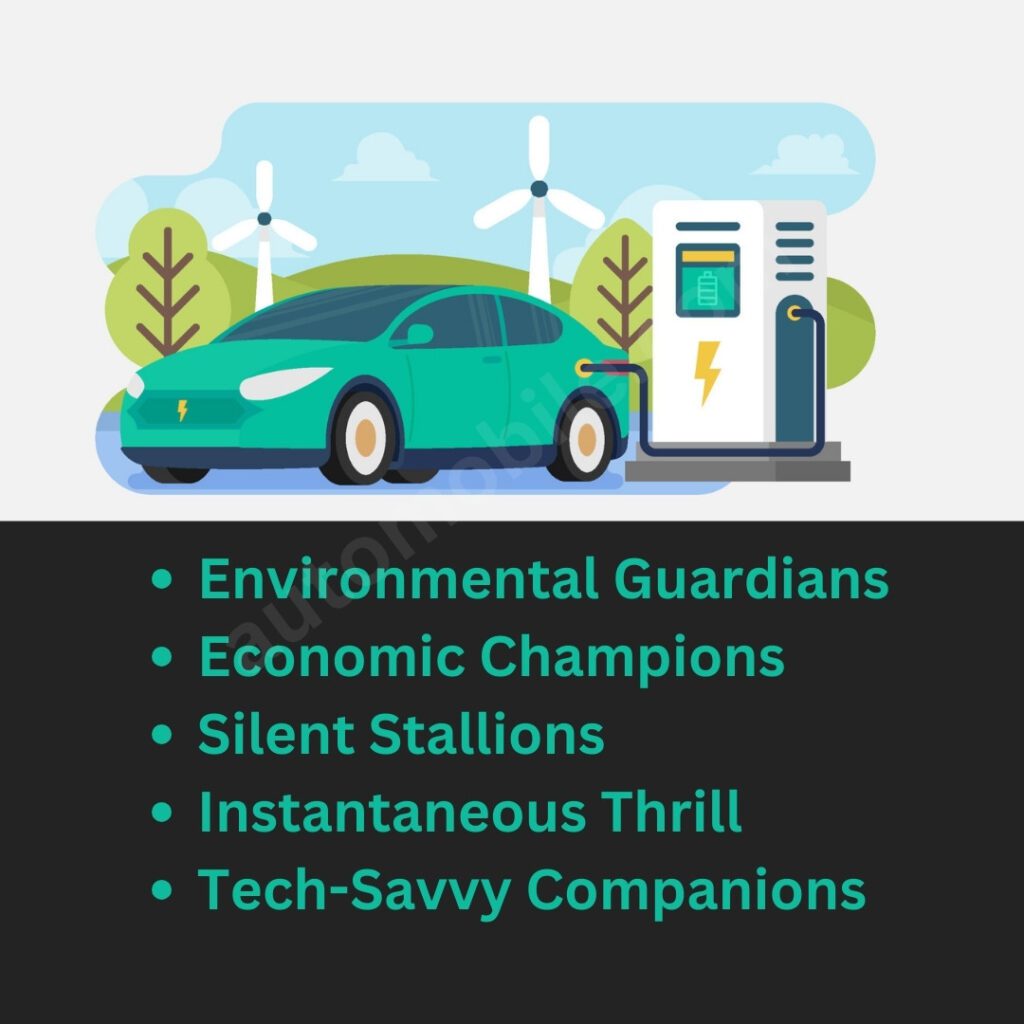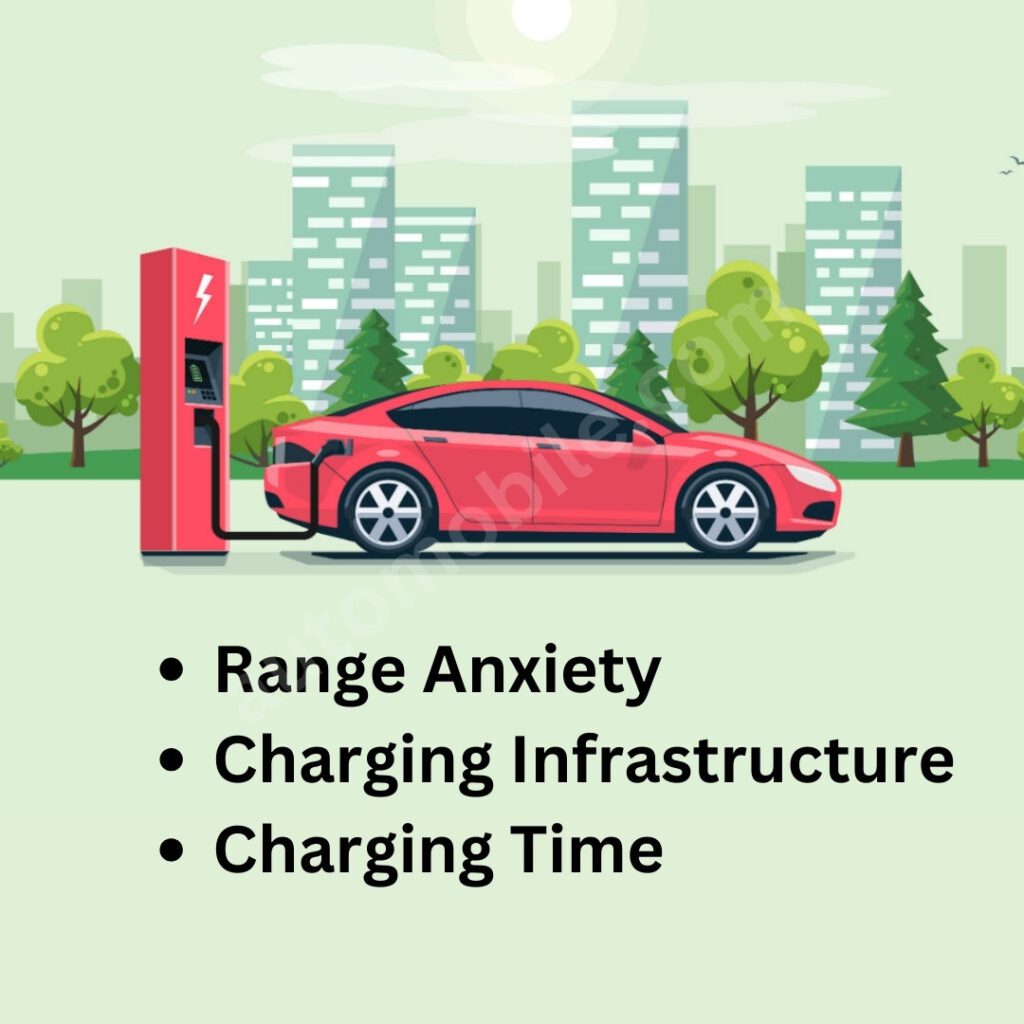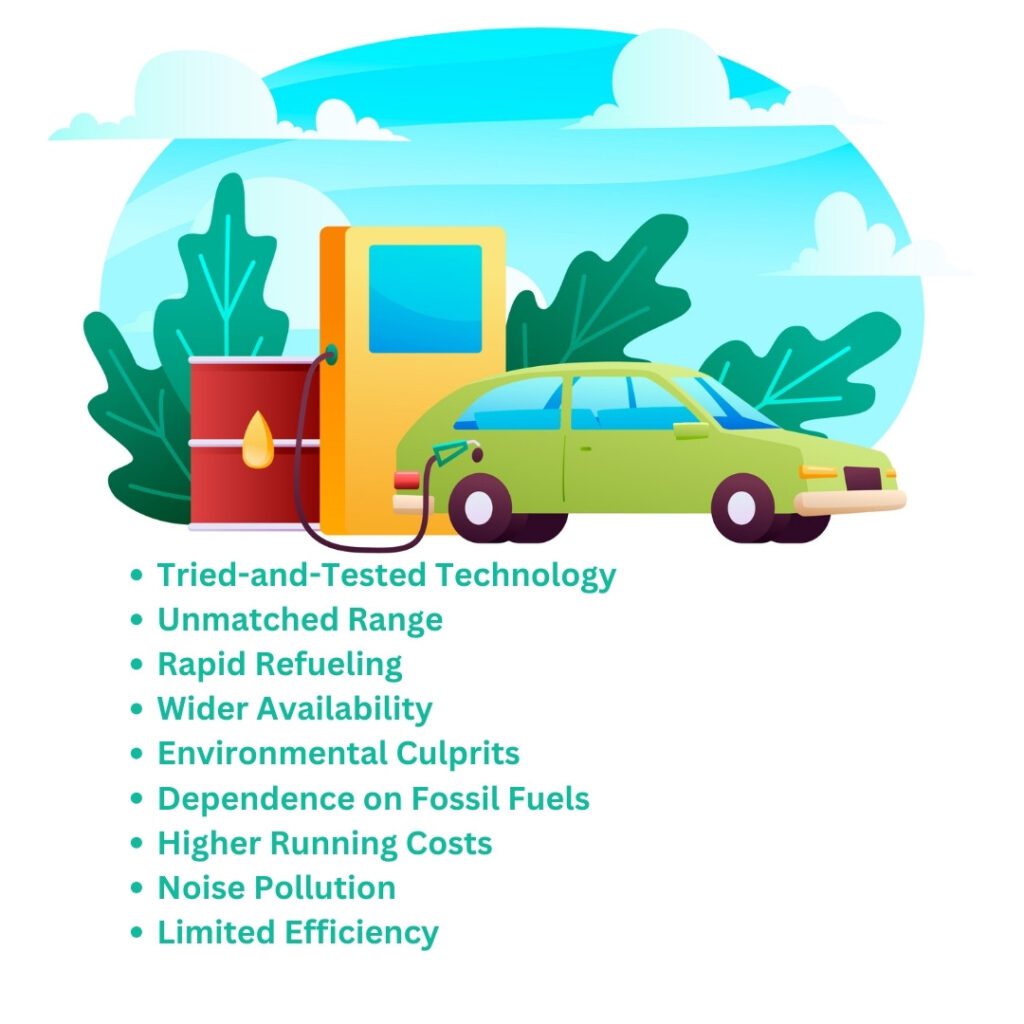Transportation sector is at the crossroad of innovation, with the need to not only become sustainable but also energy efficient. This has consequently stimulated the advancement of EVs compared to internal combustion cars that have dominated the market for a long time. Choosing between an EV and an internal-combustion engine vehicle may be a complex decision, as the two technologies meet different needs and are accompanied by their own set of advantages and disadvantages. Let’s explore these two significant driving forces in great detail so you can benefit from all of them while having an eco-friendly driving experience.
Electric Vehicles (EVs)
Engines of electric vehicles are driven by electric motors that get their power from high-voltage battery packs. These batteries are topped up by plugging the car into a charging station in the same way you would charge your smartphone. EVs boast a compelling array of benefits:

Environmental Guardians: On the contrary, gas-guzzling cars that give out pollutants and greenhouse gas emissions get replaced by EVs that do not produce any harmful exhaust gas. That implies the air becomes cleaner, especially in urban areas, and it is a very important step in fighting climate change.
Economic Champions: Though the initial buying price of an EV is typically higher than a standard gasoline vehicle, EVs have a longer-term cost advantage. Electricity is generally cheaper than gasoline or diesel, and moreover, EVs do not require much maintenance because they have simple designs with fewer moving parts. Add the possibility of government rebates and incentives for electric vehicles, and the economic aspect of going electric looks even more favorable.
Silent Stallions: EVs are specially engineered in such a way that they run in silence which, in turn, results in less noise pollution in the surroundings.
Instantaneous Thrill: The electric motors give the maximum amount of torque, giving a shining smooth drive with extraordinary acceleration from a direct start.
Tech-Savvy Companions: EVs act as the most advanced vehicles in the automotive tech area, with the newest driver-assistance systems, infotainment, and connectivity available.
However, it’s important to acknowledge the limitations of EVs:

Range Anxiety: Currently, EVs have their weakest point in the driving range. Though battery technologies are steadily developing, the current EV model cannot manage as much distance on a full charge as a fuel vehicle can on a full tank. This may result in what is called by the drivers as “range anxiety,” especially on longer trips.
Charging Infrastructure: The installation of charging stations is still developing in some regions, particularly superfast stations for covering long distances. While home charging remains the most convenient option for everyday use, the complexity of the gas station network still exceeds that of charging stations.
Charging Time: Although dramatic overnight charging at home is an option, a complete fill-up of an electric vehicle’s battery takes several hours, which is much longer than refueling a gasoline car. However, this can be an impediment for those who require quick and easy refueling points during extended journeys.
Fuel Vehicles

Internal combustion engine (ICE) vehicles, colloquially referred to as fuel vehicles, have been the prevalent means of transportation for the past eleven decades. They are powered by gasoline or diesel, combustion of the fuel in an engine to run the car. Here’s what fuel vehicles offer:
Tried-and-Tested Technology: For a lot of drivers, gas-fueled cars are a tried and tested technology. They can easily be learned and operated, and changes in the behavior of most drivers will be minimal.
Unmatched Range: Fuel vehicles have a larger fuel tank capacity that can drive for a longer range compared to EVs. Because of this, they are most suitable for long highway runs or for the situations when regular charging is not possible.
Rapid Refueling: Refueling stations are a convenient break stop on lengthy road trips as filling the gas tank could take only a couple of minutes. Gas stations everywhere ensure that drivers do not become stranded on their way with no fuel.
Wider Availability: There are gas stations everywhere which makes it very easy to find fuel almost all across the country. You can make a road trip with no worry of where to get gas.
Internal combustion engine (ICE) vehicles, while familiar and convenient, have some drawbacks in today’s world:
Environmental Culprits: Fuel-driven cars play a big part in the production of air pollutants and greenhouse gases. Emissions produced during the combustion of fuel, whether gasoline or diesel, contain pollutants such as nitrogen oxides and PM2.5, which affect air quality and contribute to global warming.
Dependence on Fossil Fuels: Fuel vehicles run on limited fossil-fuel resources. This is the source of dependence that could be exploited by the price fluctuations as well as the political instability in oil-producing countries.
Higher Running Costs: Although the initial price of a fuel vehicle may be cheaper than an EV, the fuel costs in the long run can drain your wallet. Moreover, running costs of fuel vehicles are increased by the fact of frequent maintenance due to their complex engines with more moving parts.
Noise Pollution: The combustion engine of conventional vehicles creates much more noise than EVs, which means that it adds to the noise levels in cities and on highways. This may lead to conflict among residents and wildlife.
Limited Efficiency: Intrinsically, an internal combustion engine is always less efficient than an electric motor. A decent amount of energy is lost in form of heat during the combustion process and this is the main reason for getting poor fuel economy in comparison to EVs (Electric Vehicles).
Whether to opt for an EV or a fuel vehicle, it all depends on your personal needs and preferences. Consider the distance you usually drive, charging infrastructure availability, budget, and environmental impact. For you as a driver, if you focus on eco-friendliness, low running costs, and a smooth, silent ride, and your distance needs are met, then the car may be the right option for you. However, if the majority of your driving is over long distances, you don’t have easy access to charging stations, or you prefer the familiar, readily available refueling of gasoline vehicles, then an old-fashioned fuel car would be a better choice.
Transportation is on the threshold of a major revolution. With the development of battery technologies and the subsequent expansion of charging infrastructure, EVs are becoming a real option for all. The future of transportation will probably come with a mix of these technologies, so your decision will matter as much.

